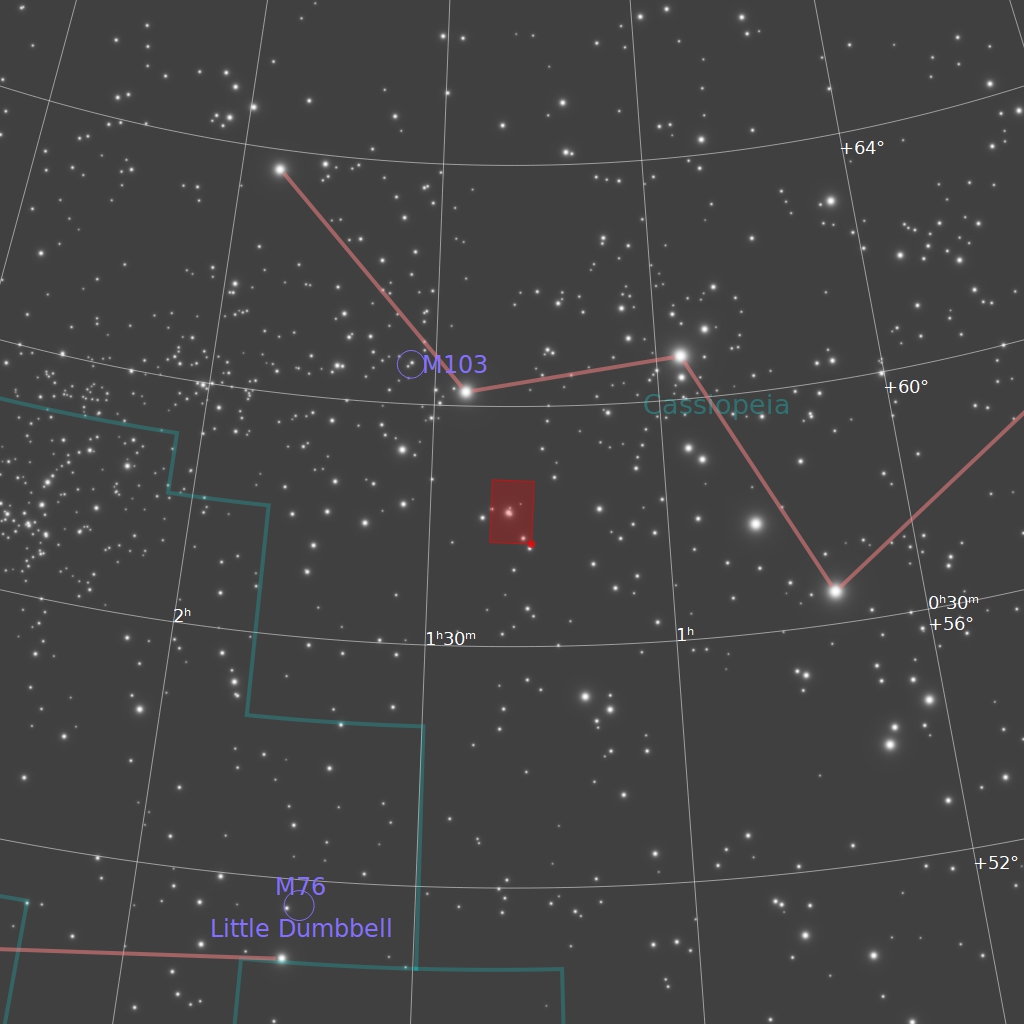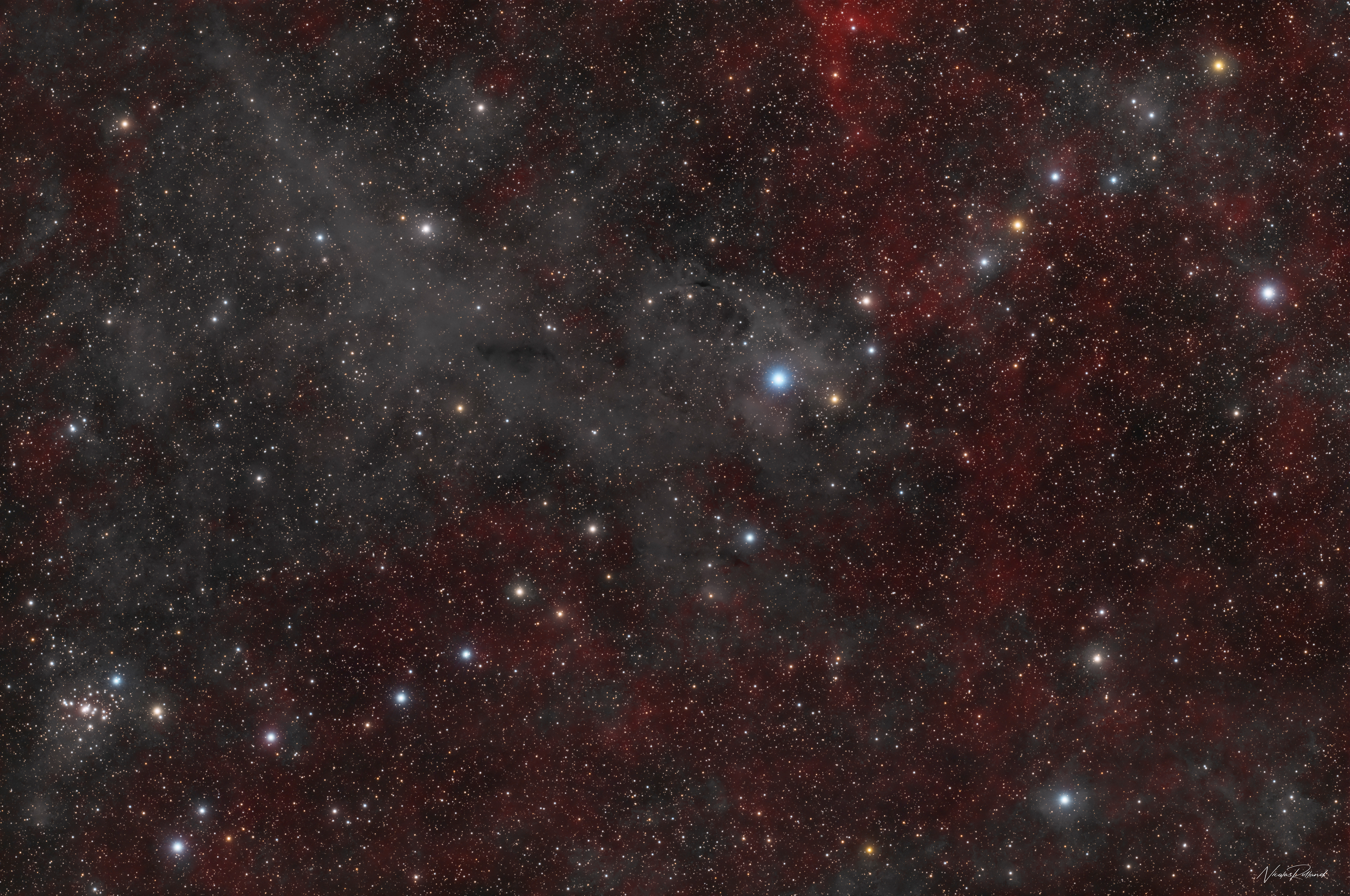Kemble's Cascade
Asterism with IFNs & Faint Ha
Kemble's Cascade, or Kemble 1, is a stunning asterism located in the constellation Camelopardalis. This star formation appears as a straight line of more than 20 stars, ranging from the 5th to the 10th magnitude, and stretches across 3 degrees of the night sky, equivalent to the width of five full moons. It seems to flow into the compact open cluster NGC 1502, creating a beautiful visual effect reminiscent of a celestial waterfall.
The brightest star in this cascade is HD 24479, a 5th magnitude star that stands out in this alignment. The asterism was named by American astronomer Walter Scott Houston in honor of Father Lucian Kemble (1922–1999), a Franciscan friar and amateur astronomer. Father Kemble discovered the cascade while observing the sky with 7×35 binoculars, describing it as "a beautiful cascade of faint stars tumbling from the northwest down to the open cluster NGC 1502."
Houston, impressed by the discovery, featured the asterism in his "Deep Sky Wonders" column in Sky & Telescope magazine in 1980, giving it the name "Kemble's Cascade." This brought the formation to the attention of amateur astronomers worldwide, ensuring its place among the celestial wonders admired by skywatchers.
Thanks Christophe for sharing the raw data.
TECHNICAL DATA
ACQUISITION DETAILS
OPTICS Takahashi FSQ106
CAMERA ZWO ASI2600MM Pro
MOUNT Sky-Watcher HEQ5 Pro
FILTERS Ha, L, R, G, B
LOCATION Saintes, Nouvelle-Aquitaine, France
DATE April 2024
EXPOSURES 29.6 hours (Ha 86 x 600 sec, L 140 x 180 sec, R 55 x 180 sec, G 55 x 180 sec, B 55 x 180 sec)
PROCESSING SOFTWARE Pixinsight, CCDstack, Photoshop
DATA ACQUISITION Christophe Ma

TARGET DETAILS
RA 01h 19m 38.7s
DEC +58° 14' 35.1"
MAGNITUDE 6.4
SIZE 62.6 x 41.7 arcmin
PIXEL SCALE 0.626 arcsec/pixel
ORIENTATION Up is 272 degrees E of N
CONSTELLATION Cassiopeia
